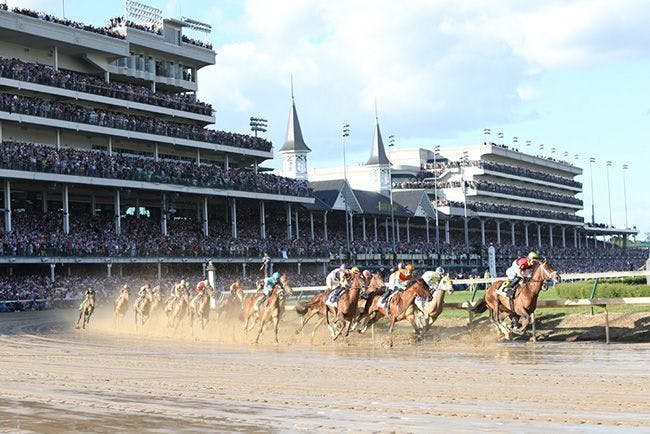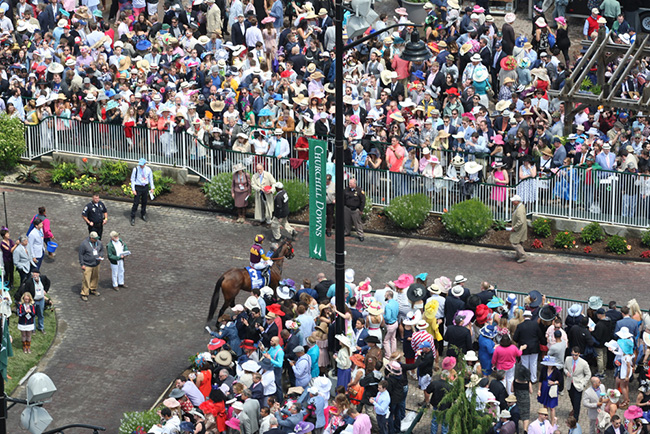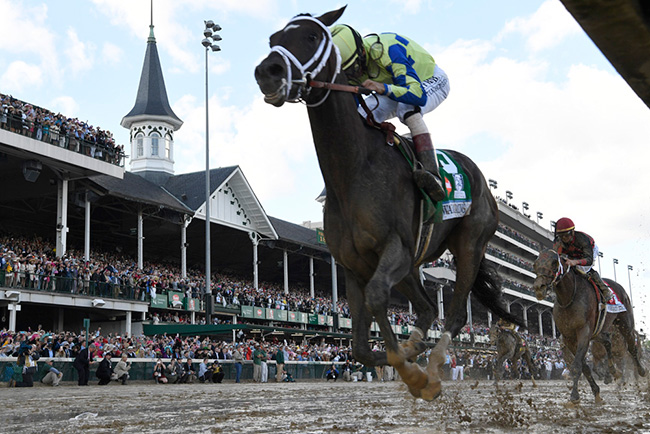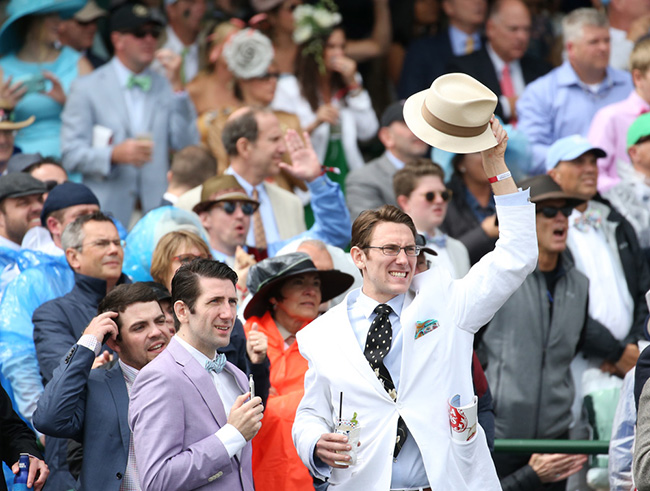Industry Insiders Reveal Kentucky Derby Betting Opinions

Kentucky Derby Betting Tips and Expert Opinions
Thoroughbred racing industry members from around the country share their wisdom and betting experiences
We’re three weeks from the centerpiece of Thoroughbred racing in the U.S., but for many the process of handicapping and analyzing the Kentucky Derby to form betting strategies has been ongoing for months.
With the final Road to the Kentucky Derby preps almost completed and the field nearly formed, the focus soon turns to not only sniffing out the winner but also crafting mutuel tickets around that opinion in the hopes of a significant payday.
What goes into making that final selection and deciding how to bet the Kentucky Derby?
Opinions on wagering obviously vary, and a survey of prominent handicappers and industry insiders revealed just that when asked about their views ahead of what some are already describing as one of the most contentious and fascinating Derby renewals in years.
With post-time favorites currently on a five-year winning streak in the Kentucky Derby, answering the question of “Who is the best horse?” remains to some the most important handicapping factor and a jump-off point to any analysis of the race.
“Like many, I used to handicap the Derby a lot differently than I would the sixth at Turfway on a Thursday, worrying about breeding, Dosage Index, how many preps the horse might have had, seasoning, etc.,” said long-time reporter and handicapper Bill Finley. “The way horses are prepared for the Derby has changed so much in recent years that I think a lot of those factors have been negated. When it comes to handicapping, I now treat it like any other race.”
“Pace scenarios are still vital in the Derby,” Finley added. “Though we have not seen it in a few years, the race can turn into a meltdown where all the front runners fall apart and some bad horses can stumble into third or fourth just by passing exhausted horses. Conversely, you have to be aware of a pace scenario that will favor the front runners.”
Peter Rotundo, Breeders’ Cup’s Vice President of Media and Entertainment, is firmly in the camp that pace makes any race, especially the Kentucky Derby.
“I think you have to treat it like any other race and find the horse who will have the best pace setup,” Rotundo said. “It’s hard to figure out who will [have the best] trip with 20 horses in the race so really you have to keep it as simple as possible and try to not overthink it.”
Scott Shapiro, handicapper and analyst for Brisnet.com, TwinSpires.com, and BetAmerica.com, feels recent changes in how horses qualify for the Derby have made an impact on conventional pace analysis.
“The factor I think has the most significant impact now is running style,” Shapiro said. “With less speed horses that are clearly distance-challenged entered it has become almost imperative to have some sort of tactical speed. I am no longer willing to endorse a closer like I did several times in past renditions of the event.”

For others, how a horse looks and has looked leading up to the first Saturday in May is most crucial.
“I am a very visual handicapper, so how a horse looks and travels is the number one factor for me,” said Joe Kristufek, whose many hats worn include his current position as Churchill Downs’ on-track analyst.
“That being said, the strength of the races they’re exiting, race shape, 10-furlong pedigree, and how they train once arriving at Churchill are all key elements.”
Jill Byrne, Breeders’ Cup’s Senior Director, Industry Relations, and a former television and simulcast analyst says appearance is one of the most important factors for her. “How the horse looks and trains in the week leading up to the Derby is critical for me,” she said.
Donna Barton Brothers, a former jockey and now a reporter/analyst for NBC Sports’ Triple Crown coverage, concurs.
“As we get closer [to the Kentucky Derby] the number of people and activity increases on the backside. How are the horses handling it? Do they appear to thrive on the attention or shirk from it? I will toss any horse that is not handling the Derby week crowd during morning training hours and/or in their paddock schooling sessions in the afternoon,” she said.
Shapiro, however, thinks evaluating the appearance of a horse is the most overrated factor in the lead-up to the First Saturday in May.
“If a horse looks bad I care. The fact is most look great or they wouldn’t be in the race,” he said. “I have seen too many overbet horses go down the drain that look like they can’t lose.”
Noted handicapper/reporter John Pricci, currently the executive editor at horseraceinsider.com, took a nuanced view saying: “The experience factor can be, at once, overrated and underrated.”
That point is especially relevant this year as Justify, who did not race at two and will have only three starts heading into the Kentucky Derby, might wind up the low-odd favorite. His unconventional preparation may not deter someone like Joe Kristufek from potentially backing him, though.

Over rated betting factors for the Kentucky Derby
The post-position draw was described by several respondents as the most overrated Derby handicapping factor.
“Most overrated [factor]? History. Apollo curse. Strength of preps, etc. Every horse and road to the Kentucky Derby is different,” he said. “I don’t believe in ‘a horse can’t do that’ based on history. I look at every horse, race and situation individually.”
The most underrated handicapping factor in Kristufek’s estimation is overlooking what a horse has shown capable of doing on their best day. “If their final prep wasn’t great, but the one before was, and they have an excuse…”
For Shapiro, the trainer angle is the most underrated factor to an important degree.
“I know it gets plenty of attention, but this race more than any other I know of requires near perfection from start to finish,” he said. “It is hard enough to win if you are Baffert or Pletcher. If you are not experienced it is a huge knock to me. Like Bolt d’Oro (trained by Mick Ruis) this year.”
When asked about the enduring importance of pedigree, a common refrain was that it’s still a leading factor but perhaps not as much as it once was. Several respondents noted that too little attention is paid to one side of a horse’s family compared to the other.
“The dam is much more influential than many people believe,” Donna Barton Brothers said. “So much significance is given to the sire and his ability to get the distance but, in reality, affinity for turf vs. dirt, sprinting vs. routing, typically comes from the female family.”
Byrne agreed, adding: “One thing to look for in a pedigree is turf breeding on the dam side. Those horses tend to excel on the dirt course at Churchill.” Said Kristufek: “I definitely tilt towards the dam’s side. What did they do and their siblings do on the track and what have they produced?”
Rather than a deep pedigree analysis, many players perhaps opt for Scott Shapiro’s approach.
“I use it as a separator for the most part,” Shapiro said. “Like everyone I remember caring about Dosage. When that was out the window I started trusting my eye and gut on stretch outs a lot more.”

What all the work and time invested in solving the Kentucky Derby wagering puzzle ultimately comes down to is walking away with more cash than you had before the gates sprung open.
“With 20 horses in the race, it’s the best betting race of the year,” Kristufek said. “I honestly spend six months handicapping it. I should be confident enough in my opinions to make a significant investment.”
Into which pools our respondents generally dive into on the Derby varied.
Jill Byrne called the Trifecta box her “favorite” Derby wager. John Pricci called the Win, Exacta, and Trifecta “a must,” but noted he tended to scale back play on the Superfecta due to the absence of fractional wagers. That, however, doesn’t stop others from seeking an epic payout.
“From a wagering perspective, I focus on Trifectas and Superfectas,” Peter Rotundo said. “You rarely have chances at a lifetime score so this the race to take the shot at glory!”
“If I pool money, I’m certainly going to swing at the Superfecta…it pays SO much better than the Trifecta,” Joe Kristufek said. “If I really like a horse, I will pound the Win-Place-Show pools regardless. Exactas are also a point of focus. Trying to hit them multiple times based on my confidence level.”
As Bill Finley noted, even taking short prices among a field of 20 can potentially pay dividends.
“There is actually great value on the favorites in the Derby. That’s because of what I call the ‘Mine That Bird factor,’” he said. “The people who bet one race a year are now hunting for longshots and horses that should be 200-1 are going off at 38-1. If you love a longshot, don’t bet him to win, but use him in Trifectas and Superfectas where the novice players don’t affect the pools.”
“The Superfecta is enticing because if you get it right you really can hit a $90,000 bomb. But, again, I’ll treat [the Derby] like any other race, looking for the best value. Nothing wrong with betting a 6-1 shot to win if you feel the horse should be 5-2.”
Rather than committing himself to playing certain wagers, Scott Shapiro takes a broad overview of the landscape before deciding whether to invest in specific pools.
“I approach every Derby different, but for the most part it is based on how I feel about the favorite and if I have a key horse,” he said. “Some years I will just take shots with only price horses and limit my bankroll. Other years if I like a horse I will bet to Win, key in Trifectas and single in horizontals.”
Opinions abound not only on the horses that will eventually line up in next month’s Run for the Roses, but also on the final analyzing process and the best way to capitalize on the opinions thus formed. Pace analysis, physical appearance and works, and a deeper exploration of pedigree were among the emphasized factors respondents would encourage bettors to take more into account as they approach their study of the Kentucky Derby. From a wagering perspective, respondents most commonly mentioned Win and Trifecta betting as their favored way of investing on the Derby.
These topics can be further researched through a variety of products and articles found at Brisnet.com and TwinSpires.com. Additionally, a special thanks to our guests for their knowledge and insight; Peter Rotundo, Jill Byrne, Donna Barton Brothers, Bill Finley, Scott Shapiro, John Pricci and Joe Kristufek.
Inspired to learn more about handicapping or looking for tools to help in your search for selections? We can help!
Read more on Wager Types and Bet Calculating
5 Tools for more informed betting
TwinSpires 2019 Kentucky Derby News & Notes
2018 Kentucky Derby news and notes
BRISnet.com Kentucky Derby news and updates
Kentucky Derby Products and Past Performances
Kentucky Derby Study Materials
PAST PERFORMANCES for Kentucky Derby probables
ADVERTISEMENT



